Wetzlar Camera Auctions is owned by Lars Netopil of Classic Cameras, Wetzlar and Jo Geier of Mint and Rare, Vienna. They hold one auction in October every year. They spend much of the year sourcing rare cameras and other items from around the globe. Not only are the items this year interesting as usual, but they also contain a lot of history, particularly as regards Leitz/Leica, which originated in and is still located in Wetzlar today.
Significant
These are just a few highlights, and a full catalogue has been issued. Before going through the items for this article, I will stress that in many cases, items in auctions like this one are bought by collectors to own rather than use. I know this upsets a lot of photographers, but the world is made up of people with many different interests and objectives. In my book, collecting cameras is as valid an activity as using them.
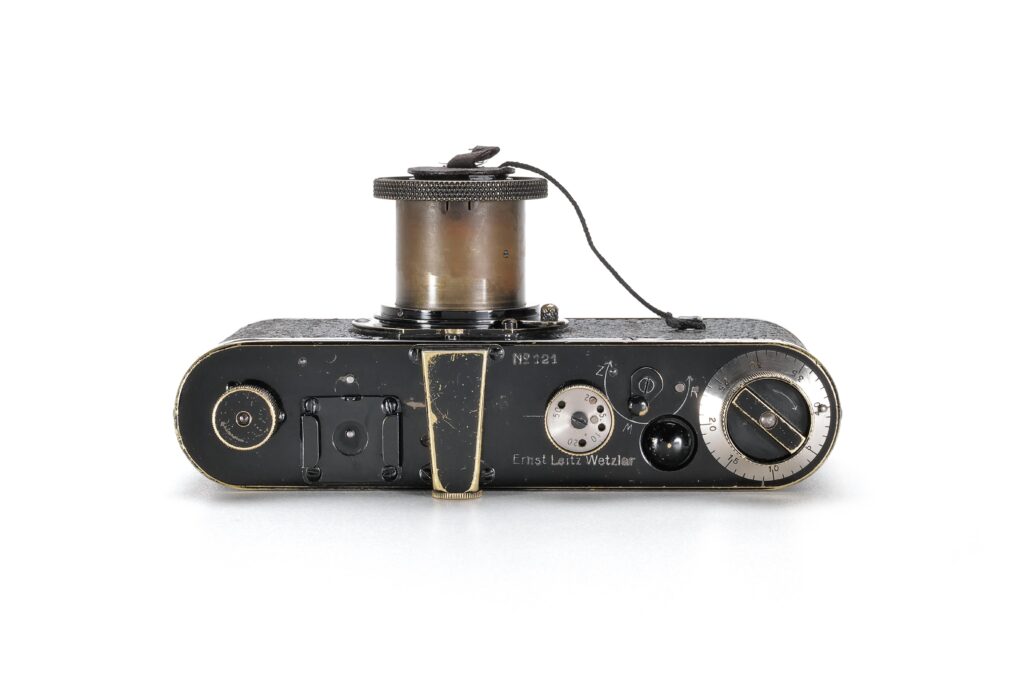
The first item is definitely the most significant one. It is a Leica 0 Series No 121. Readers here will recall the excitement and furore when 0 Series No 105, which had been used by the creator of the Leica, Oskar Barnack, was sold for €14.4 million at the Leitz auction which I attended in Wetzlar in June 2022. This time, there is no such attribution. According to Paul-Henry van Hasbroeck’s book ‘Leica, A History Illustrating Every Model and Accessory’ this camera belonged to ‘the King Collection’ in the UK, which led some people to surmise that the camera might have a Royal connection, which, alas, was not the case. However, in the German, Japanese and Italian translations of the book, this attribution was described as ‘Royal Collection’. The King, in this case, was a Charles King and not Charles III!
No delivery of the goods
According to the Leica delivery record, there was no delivery of the camera in 1923. The cameras were produced as test items and not sold. They were returned to the factory after testing, and changes were sometimes made. This one has some evidence of changes. The camera was built with a folding viewfinder, but this was exchanged for a central Galilean tube finder. It does have the original rewind knob, unlike No 105, which had a change of knob in order to use later film cassettes. It has a lens cap on a string, which was necessary as the shutter was not yet self-capping, as was the case with the production I Model As. Also noteworthy is the use of slit widths rather than shutter speeds on the setting dial. This was explained in my article on No 105 last year.
Interior design
One nice aspect of the catalogue for this auction is that there are a number of photos of the interior of the camera. This is something rarely shown in respect of a 0 Series camera. This one shows the unusual (compared to production models) film spool and internal winding posts. However, there is no sign of the 0 Series film cassette, which predated the more familiar FILCA cassette. On No 105, sold last year, the rewind knob had been changed to accommodate a FILCA.
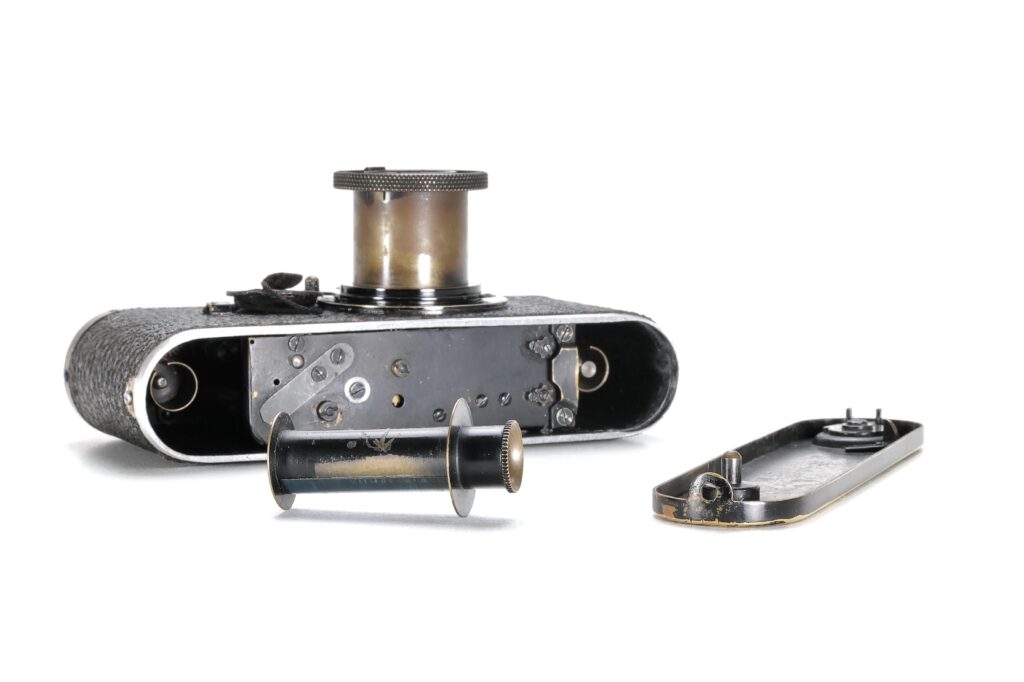
The estimate for this camera is €1.5 – 2 million. This is probably conservative considering that these cameras had been selling above €2 million before last year’s ‘great leap forward’ with No 105. All that is needed is more than one bidder with the right amount of funds on auction day. Often, such items appear before our eyes at auction time, before disappearing into the vaults of wealthy collectors. We should enjoy them while they are here, if even only for a short time.
Familiar and unfamiliar
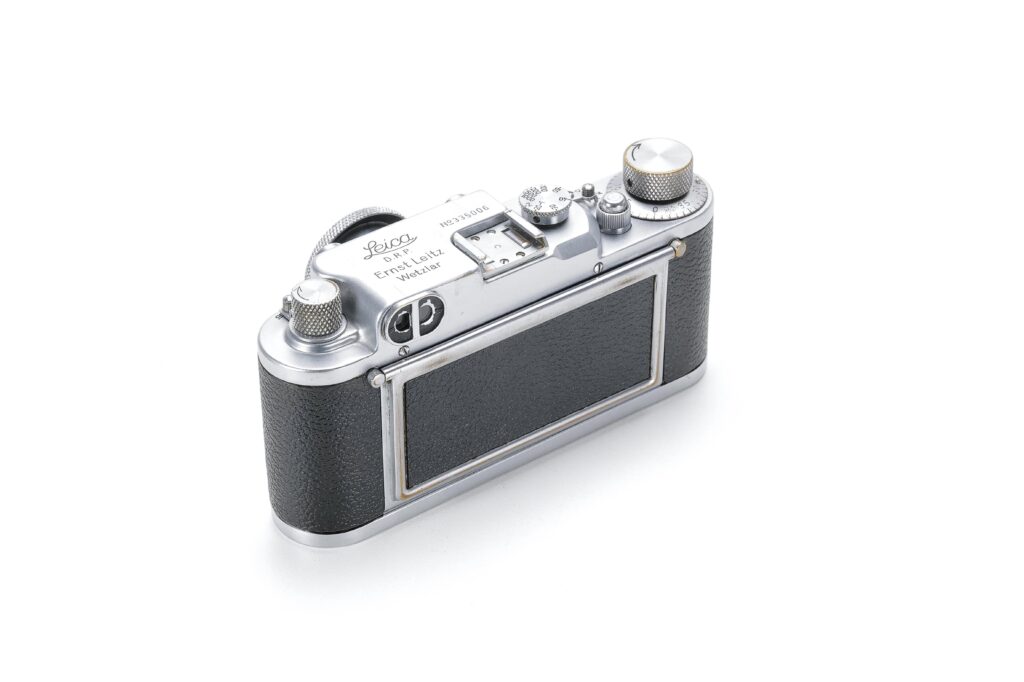
This image of a Leica is both familiar and unfamiliar at the same time. It is obviously an LTM (Leica Thread Mount or ‘screw mount’) camera. But what’s this? How come it has a flip-up rear door, just like the M3 from 1954? The camera is, in fact, derived from a prototype from 1934, as is shown here in the diary of Wilhelm Albert, who was Barnack’s ‘right-hand man’. Oskar Barnack was still alive when this prototype work was being done
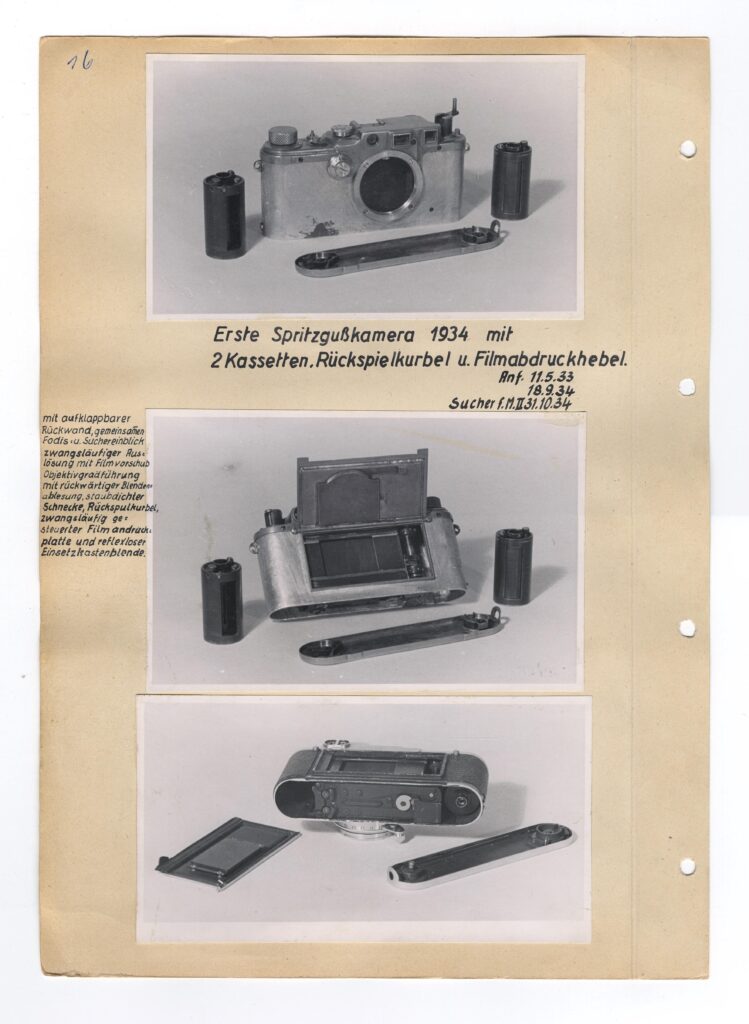
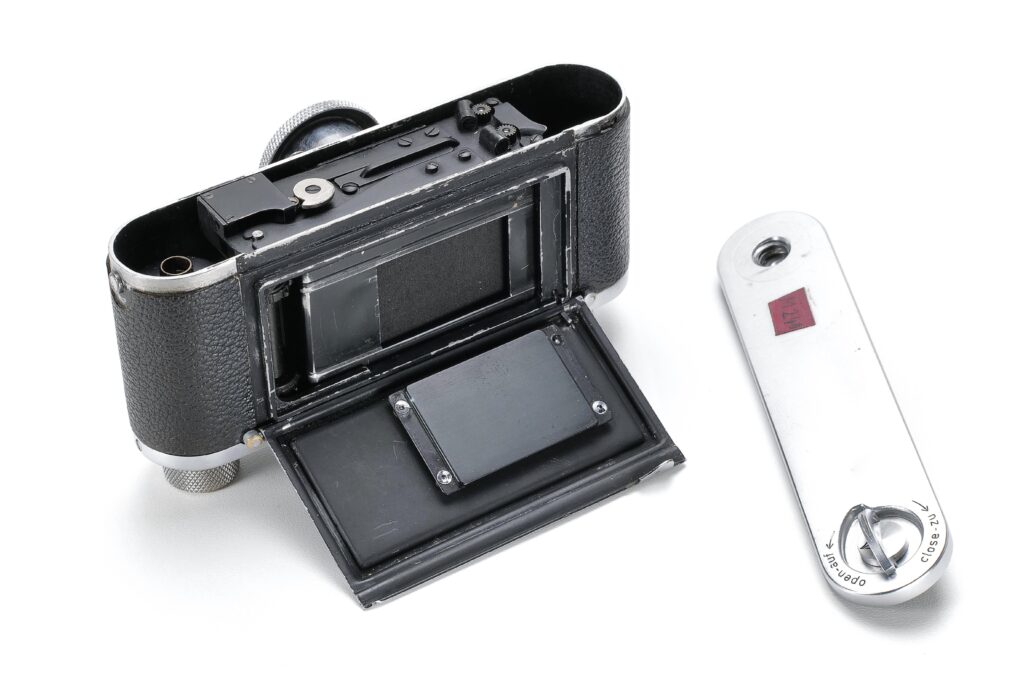
Examination of the item in this auction shows that some changes were made to the door, the rear pressure plate and other features during the testing of the prototype. This is not the only feature which took many years to appear on a Leica. Lever rewind and a combined rangefinder and viewfinder were also tested during the 1930s, but ‘events’ intervened, including the death of Barnack and World War II, of course. Also coming down from Barnack, even after his death, was the belief, within the company, in testing and retesting until everything was ‘just right’.
It is very difficult to predict a price for an item like this where only one exists and which is even rarer than a 0 Series, in fact. The current estimate range is €150,000-200,000
Leica Stemar
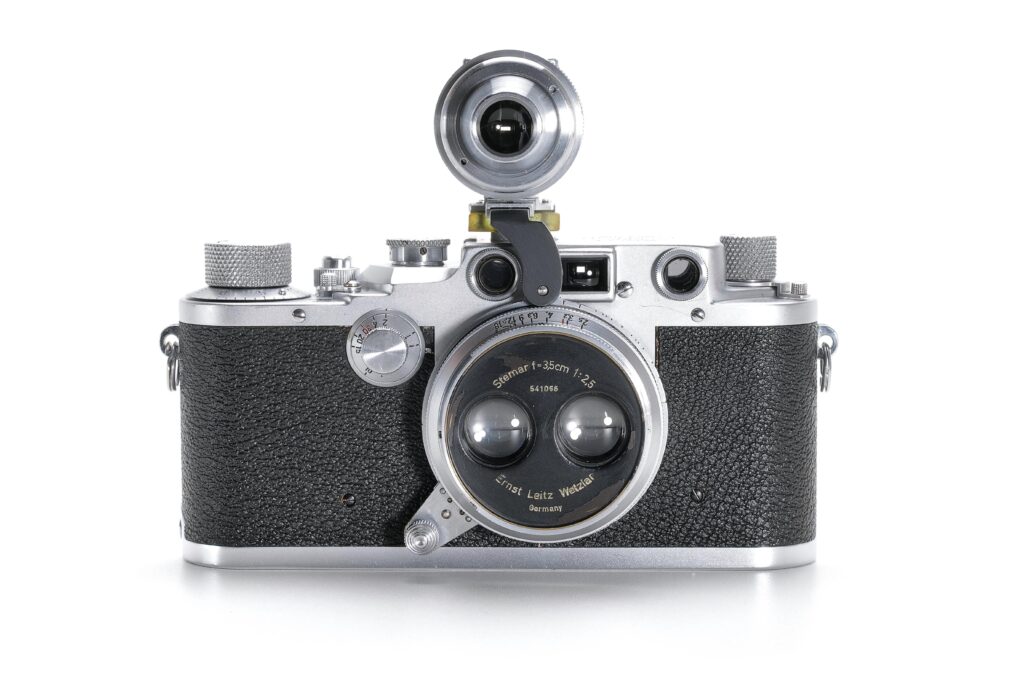
I recently picked up a nice early Leica Stereoly outfit with beautiful VOTRA viewing binoculars. This lot represents the next step after the Stereoly, which essentially split images taken with a normal single screw-mount lens into two almost identical 18x24mm images, which would give a stereo image when viewed in an appropriate device. In the case of the Stemar, what you got, in effect, was a screw-mount lens already split into two lenses to give the same stereo effect.
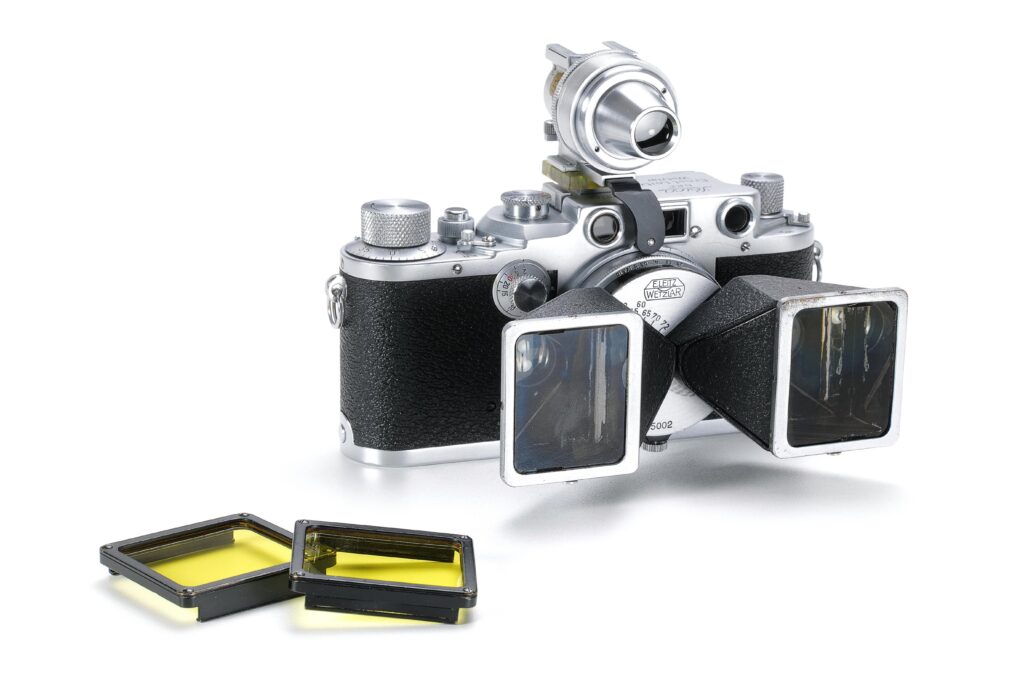
This lot is a very rare early 3.5cm f/2.5 Stemar OVUTO outfit with a special adapted VIDOM viewfinder and a set of OTEMO separation prisms that could be rotated to adjust/enhance the stereo effect. The lot also comes with a set of yellow filters and a IIIc camera.
Only 20 examples of this set were produced in 1941, and the Stemar design principle was not fully applied in a full production run until the 1950s. This makes this lot something exceedingly rare, and the estimate is in the range of €40,000-50,000.
Protection
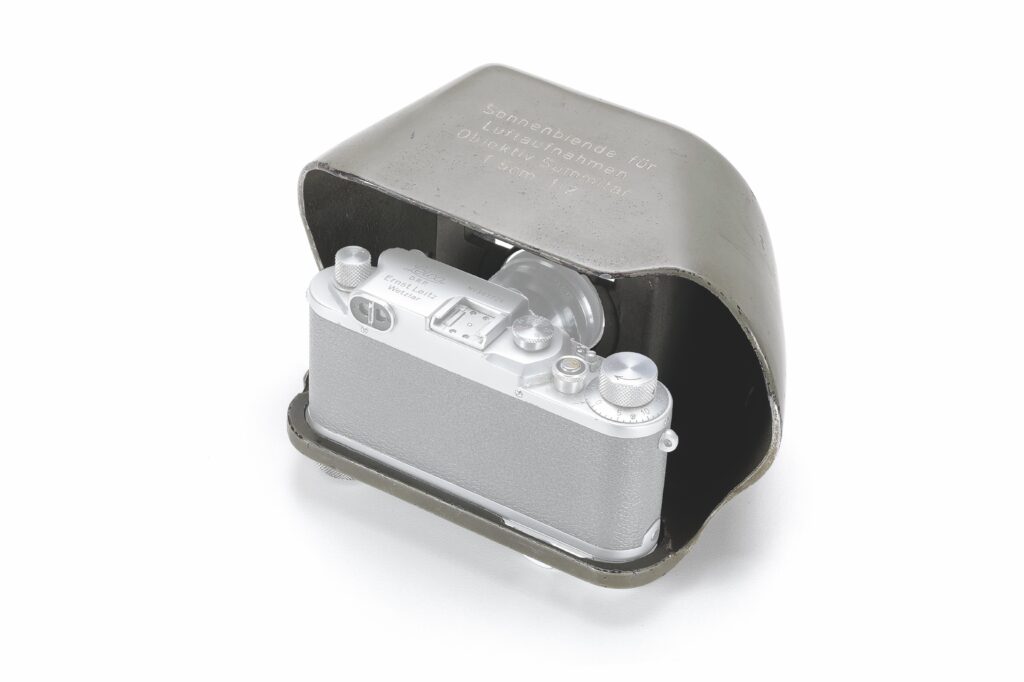
Continuing the run of extremely rare items is this combined protective housing and lens hood for holding a Leica IIIc with a Summitar 5cm f2 lens and SCNOO-C winder in a Junkers Ju 87 ‘Stuka’ dive bomber. The camera and lens are ‘ghosted’ in this image as they are not part of the auction lot. This is a one-off prototype from 1941, which also appeared in the diary of Wilhelm Albert
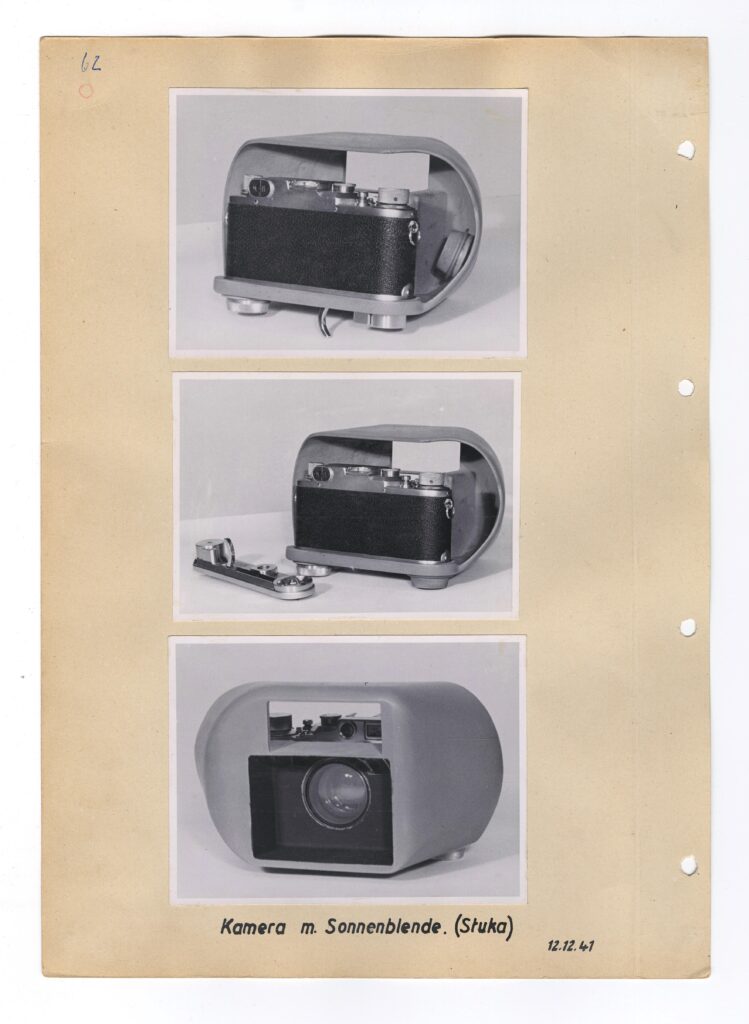
I have seen other similar hoods for use on aircraft, but I believe this one never went beyond the single prototype in Albert’s diary and is the one on offer here. The price estimate is €60,000-70,000
Photo competition
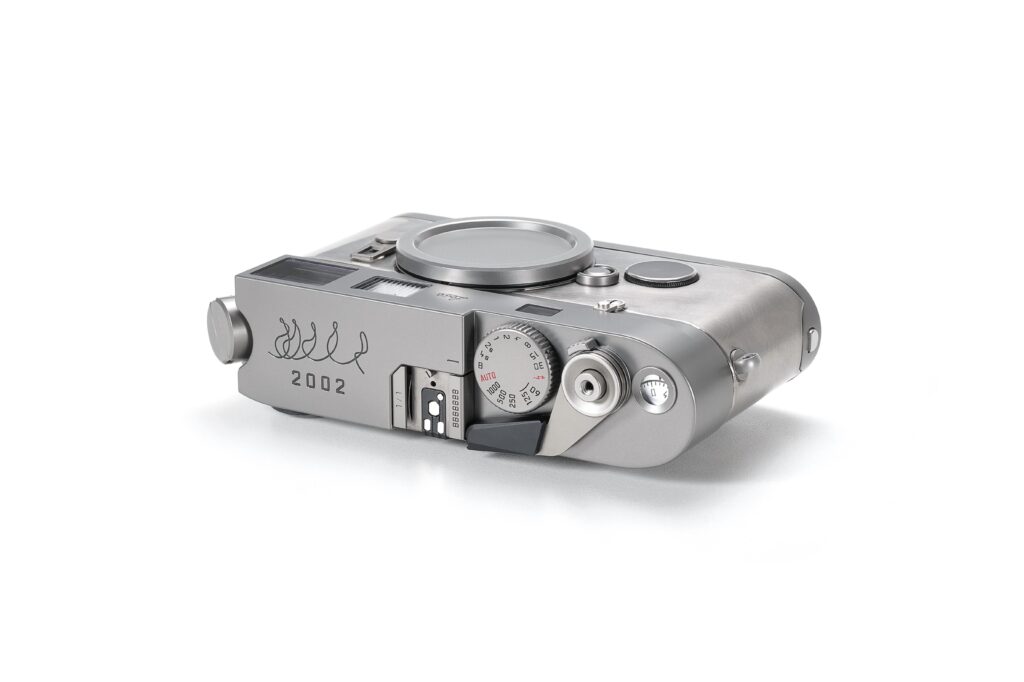
I suppose I should make a declaration of interest in respect of this camera, which was made as a prototype titanium version of the M7 for the late Sheikh Saud Al Thani of Qatar. A single production version of this was later delivered with five lenses, all made of titanium. In 2006, I went to Qatar to work in a senior Government position, where I knew and worked with several members of the ruling Al Thani family. While there, I entered a photo competition run by a local photo society, which had as its prize a Sheikh Saud edition of the Leica M6 TTL, such as the one below.
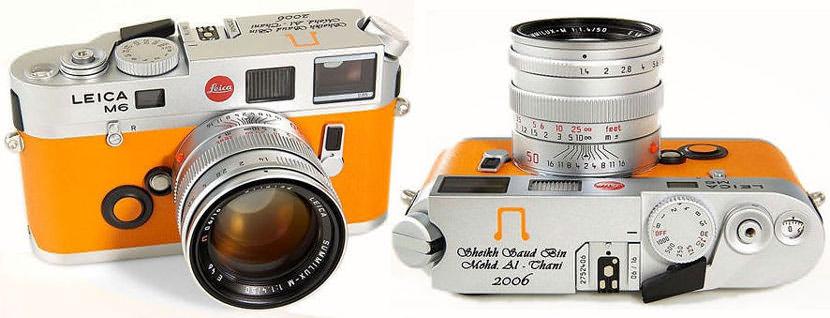
I did not win, and I have not the slightest recollection of what image I had entered. I had just switched at that stage to digital, and this suited my life there. My time for photography was limited by two factors: my work and the weather. Holding a camera in 40-50-degree C temperatures is not easy, and during certain seasons, you could have massive humidity thrown in as well. However, I should record that while there, I did have great opportunities to photograph some of the world’s top competitors in various sports, including motor, powerboat racing, athletics and tennis as well as the local culture in the souqs and the desert.
This is a one-off item, and the Sheikh Saud items sell well when they appear at auction. This one carries an estimate of €40,000-50,000.
The lenses
And now for some lenses which I will take in two groups — wide angle-normal and super-telephoto.
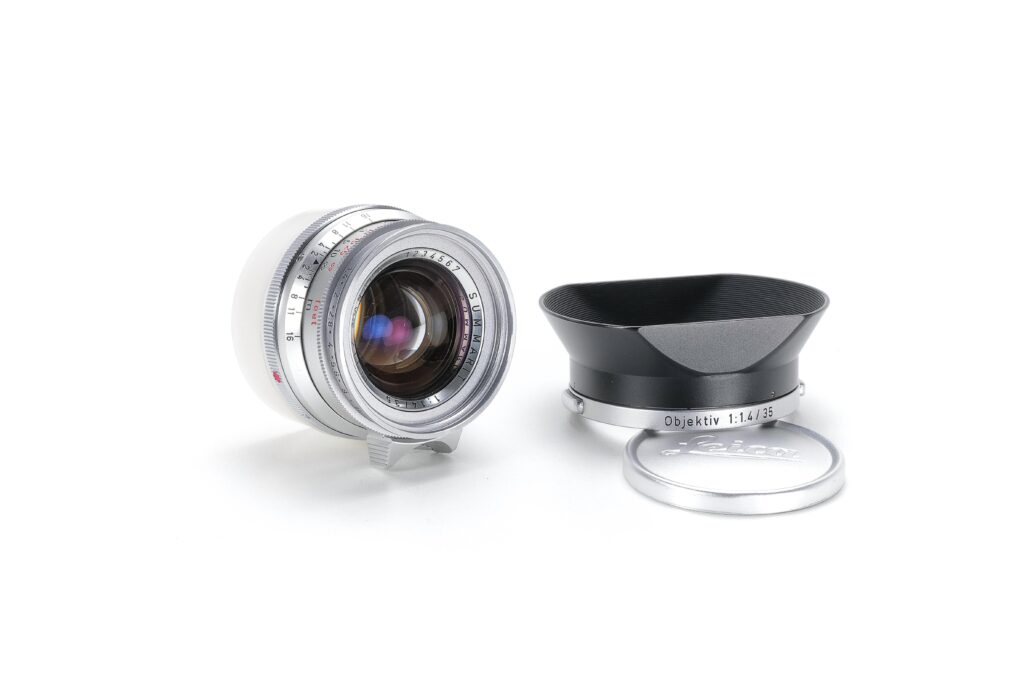
Leitz Summarit 35mm f/1.4 prototype 1959/60. As with the next lens, a 50mm f1.4, the name Summarit was applied to what were Summilux prototypes. This name had traditionally applied to 50mm f1.5 lenses, so the use here was logical in a way. This one looks quite unlike the production Summilux, resembling, to my eyes, the 8-element Summicron
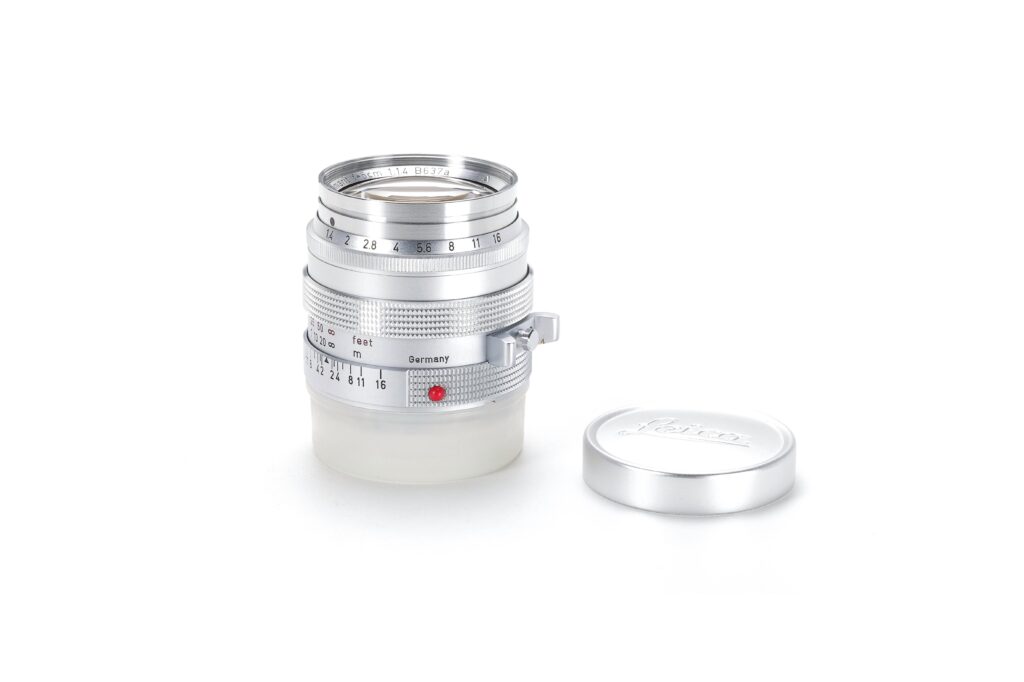
Leitz Summarit 5cm f/1.4 Prototype 1958. As with the 35mm lens mentioned above, this prototype from 1958 of what became the Summilux was also called a Summarit. The unusual focus lever with the unlock button can be seen in this image.
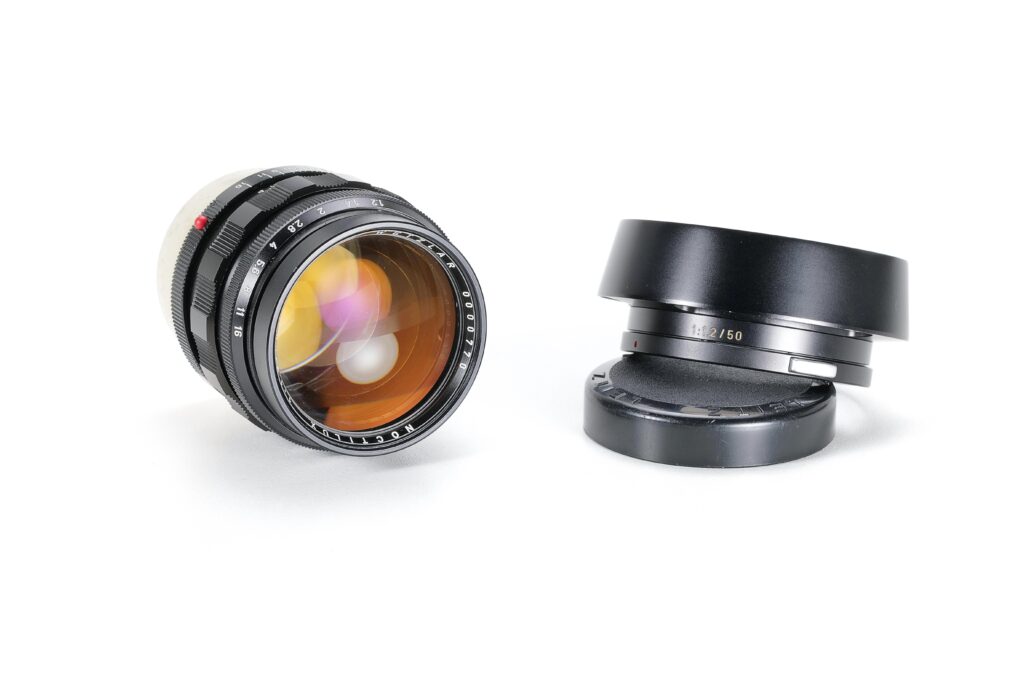
Leitz Noctilux 50mm f/1.2 prototype 1964. This eventually became the first production lens with aspherical surfaces. These were complex lenses to assemble, and it took a whole day to complete each one. This is one of 4 prototypes produced in September 1964.
Because they are prototypes, these lenses are all very rare. They are, however, the forerunners of what became very significant items in the Leica lens lineup for many years afterwards.
The estimated prices are
- Leitz Summarit 35mm f1.4 Prototype €50,000-60,000
- Leitz Summarit 5cm f1.4 Prototype €50,000-60,000
- Leitz Noctilux 50mm f1.2 Prototype €80,000-100,000
And now for some super-telephotos
Lenses like these are rarely produced these days and seem, to me, like dinosaurs from another era. This may have something to do with other means being available to get close-up images from a distance, such as digital cropping and the use of drones, but the items in this auction were never produced in large numbers, even in the ‘film era’.
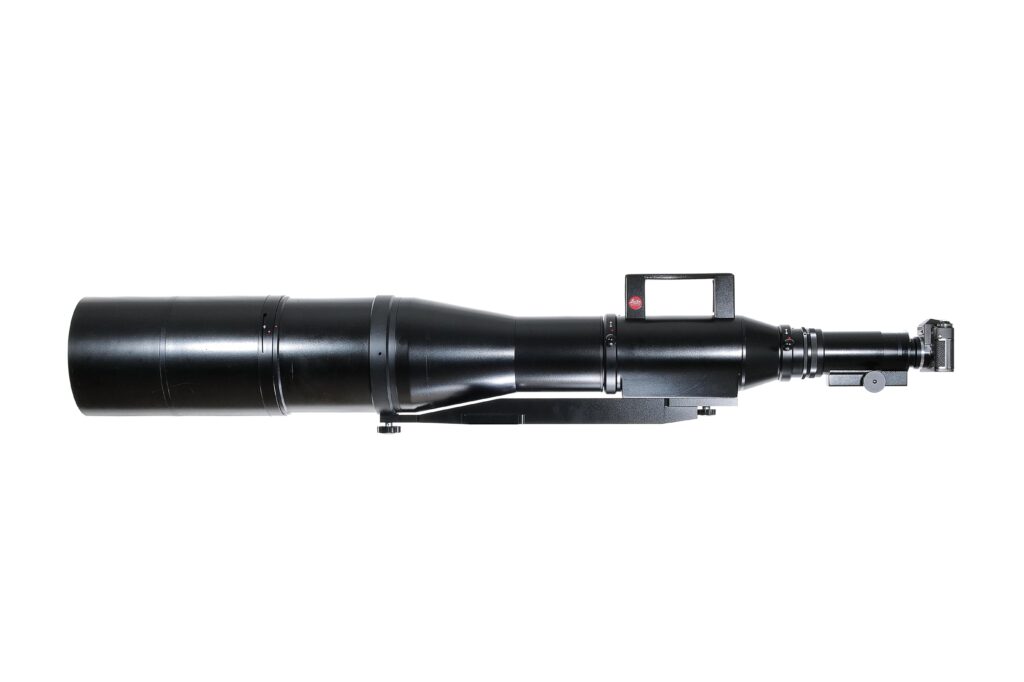
Leitz Telecron 1200 mm f/6.3 Prototype 1971. Three such Leicaflex mount lenses were produced, but the model never went into series production. This thing was big, weighing 16 kg and was 155 cm (over 5 feet in imperial measure) in length with the lens hood attached. A Leicaflex SL2 prototype is included in this lot.
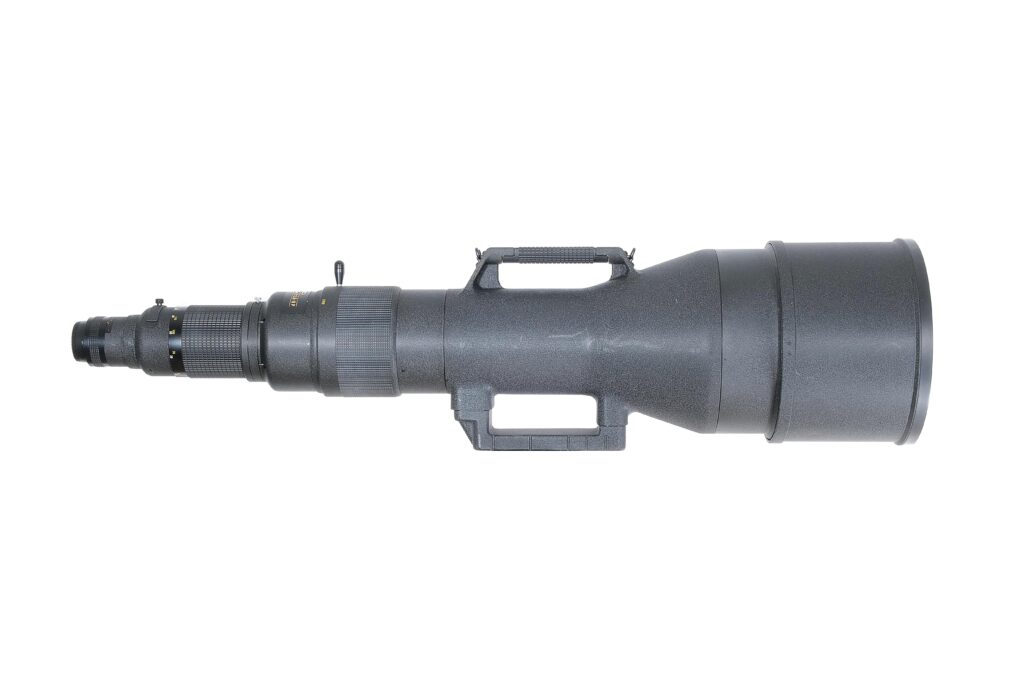
Nikon ED Nikkor 1200-1700mm f/5.6-8 1996. This zoom actually made series production for use at sports events. About 35 were made. They were a reaction to a 1200mm f/5.6 lens made by Canon. This one also weighs 16kg
Both of these monsters come with an estimated range of €80,000-100,000. Gym fees for anyone tempted to carry and use these monsters would be at the owner’s expense.
These are just some highlights from the forthcoming auction. A full catalogue containing less rare but still significant items is also available.
Read more from William Fagan
Make a donation to help with our running costs
Did you know that Macfilos is run by five photography enthusiasts based in the UK, USA and Europe? We cover all the substantial costs of running the site, and we do not carry advertising because it spoils readers’ enjoyment. Any amount, however small, will be appreciated, and we will write to acknowledge your generosity.

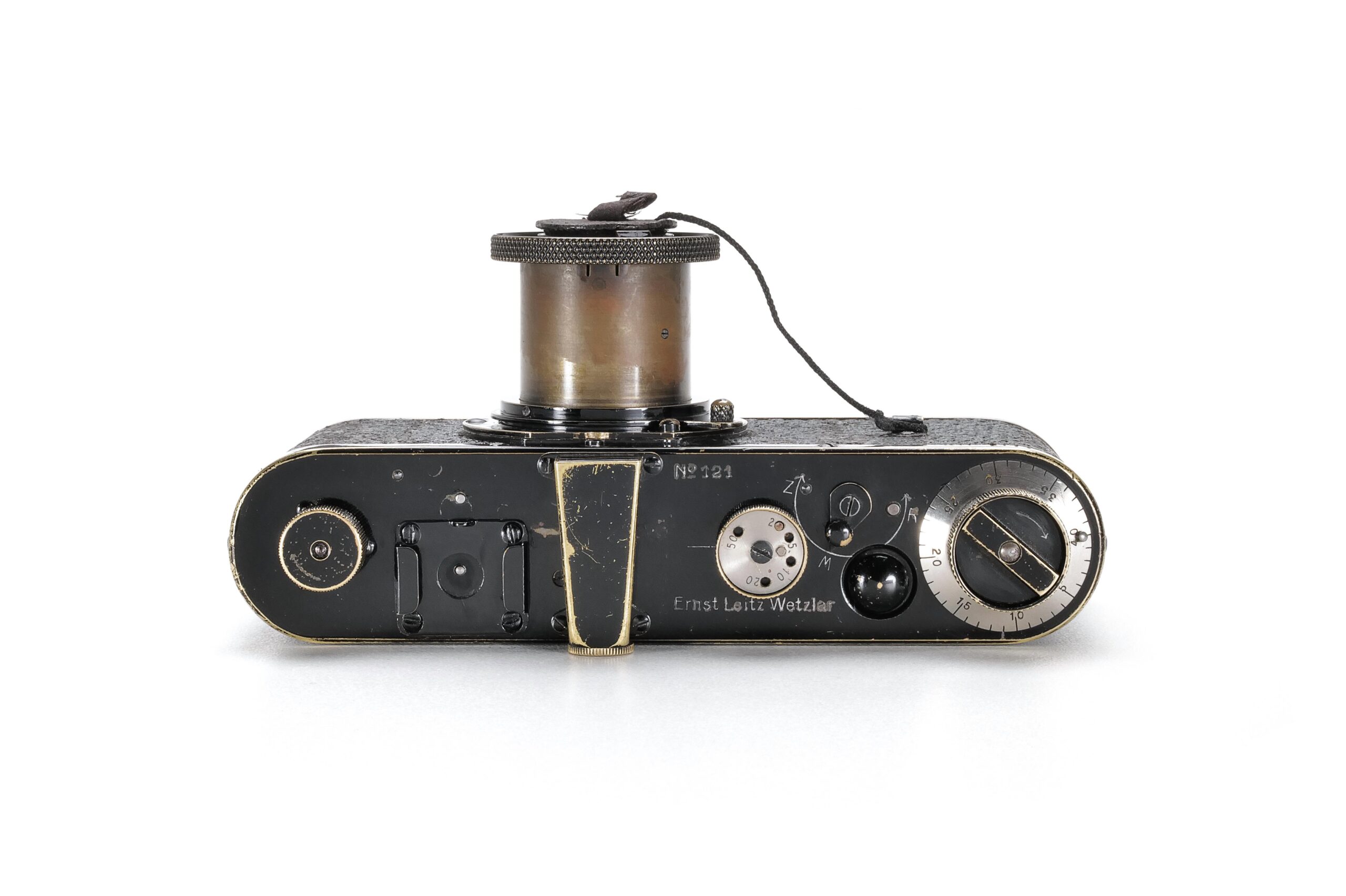
A very interesting article I wish I still had my collection ! I enjoyed my time with the best camera in the world Neil fitzpatrick
Great article William! Some other items in the auction are the cameras and lenses that belonged to Sal DiMarco. Sal was a good friend of mine through the LHSA. He was a professional TIME photographer, back when that meant something. Sal, Tom Abrahamsson and I would hang out at every LHSA meeting and Photokina together. The gear up for auction from Sal has his signature Dymo labels with his name on everything. What is missing is Sal’s trademark lens and body wraps he used to keep everything safe in his Brady bag. He used the purple cloth draw-string bags from Crown Royal!
Sal was quite a character with a million stories to tell. He was also the one who made the first LHSA meeting in Wetzlar possible. I miss Sal.
Thanks Bill. I should have said that No 121 is indicated in the catalogue as having provenance from the Charles King Collection and the Antonio Maresca Collection. The IIIc with a flip up type rear door has a red sticker saying ‘M 240’, which may have been from your friend, although I would wonder how this exceedingly rare item ever got out of the factory. It is even more rare than a 0 Series. Looking forward to seeing you in Wetzlar in October.
William